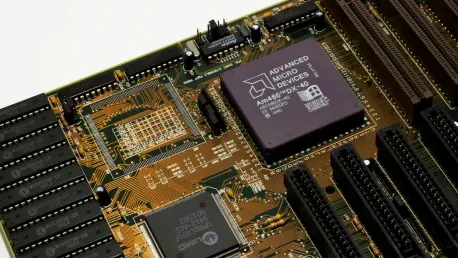Recent reductions in AMD’s price targets by multiple investment banks have raised questions about the company’s ability to sustain growth amidst ongoing challenges in the AI and PC markets. Analysts are expressing skepticism about AMD’s ability to maintain its competitive edge against formidable rivals, particularly NVIDIA in the AI chip market, and the broader concerns surrounding the PC sector. This cautious outlook has led to significant revisions in price targets and ratings, underscoring the mounting pressures on the semiconductor giant.
Investment Banks Lower AMD Price Targets
Cantor Fitzgerald and Bank of America Adjust Projections
Cantor Fitzgerald and Bank of America have notably revised their projections for AMD, reflecting a more conservative stance as they anticipate subdued data center revenues and intense competition in AI chips. Cantor Fitzgerald reduced its price target from $150 to $135, maintaining an Overweight rating. This decision is primarily influenced by concerns over lower-than-expected data center revenues, which are crucial for AMD’s growth strategy. The revised outlook from Cantor underscores the potential impact of certain market constraints on AMD’s ability to meet investors’ expectations.
Bank of America has taken a more drastic step, slashing its price target from $180 to $155 and downgrading AMD from Buy to Neutral. This significant cut highlights the competitive landscape in the AI chip market, where NVIDIA’s Blackwell GPUs currently dominate. The bank pointed to constrained supplies of these GPUs as a factor that could exacerbate AMD’s challenges, leading to increased rivalry from companies like Marvell and Broadcom. Bank of America’s analysis suggests that AMD’s position in the AI sector is far more precarious than previously thought, warranting this conservative adjustment in forecasts.
HSBC and Wolfe Research Share Their Concerns
Similarly, HSBC has dramatically lowered its price target for AMD from $200 to $110, citing limitations in the company’s AI GPU roadmap. HSBC’s analysis suggests that AMD’s offerings in the AI space may struggle to match the competitiveness of its rivals, potentially hindering its ability to penetrate the market effectively. This comprehensive assessment by HSBC reinforces the notion that AMD must significantly ramp up its efforts to remain viable in the fiercely competitive AI landscape.
Wolfe Research added to this sentiment, pointing out AMD’s limited guidance on AI growth for the year 2025. The lack of clear directives regarding future expansion in the AI market has fueled investor concerns, leading to a less optimistic outlook on AMD’s prospects. Wolfe Research’s caution reflects broader uncertainties about AMD’s strategic positioning and its capacity to navigate the quickly evolving tech landscape. This analysis eloquently conveys that AMD’s future in AI is fraught with more uncertainties than certainties, necessitating tactical adjustments from the company.
Competitive Threats and Market Dynamics
The Challenge Posed by NVIDIA and Arm-Based Chips
Goldman Sachs also weighed in, reducing its price target from $175 to $129 and emphasizing the competitive threats posed by Arm-based chips. This segment of the market has experienced considerable growth, and AMD’s margins and revenue growth could be significantly affected. Goldman Sachs’ analysis underscores the broader competitive dynamics at play, where AMD must contend not only with NVIDIA but also with a variety of emerging technologies and players. The increased emphasis on these competitive threats in Goldman Sachs’ report highlights the multifaceted challenges AMD faces in maintaining its market position.
AMD’s challenge in the AI and PC markets is further compounded by potential constraints affecting the overall PC sector. The once booming market is now grappling with slower growth projections and supply chain issues, casting a shadow on companies heavily reliant on PC sales for revenue. The competitive pressures from AI chip giants and emerging Arm-based technologies add layers of complexity to AMD’s strategic outlook, suggesting that the road ahead is laden with potential pitfalls that require adept navigation.
Navigating Market Challenges for Future Growth
Recent reductions in AMD’s price targets by several investment banks have sparked concerns about the company’s sustainability of growth amid ongoing challenges in both the AI and PC markets. Analysts are increasingly skeptical about AMD’s ability to retain its competitive position, especially against formidable competitors like NVIDIA in the AI chip industry. There is also broader unease regarding the overall health of the PC sector. This cautious sentiment among analysts has led to significant downward revisions in AMD’s price targets and ratings. These adjustments underscore the growing pressures on the semiconductor giant to navigate an increasingly competitive and uncertain marketplace. The current landscape suggests that AMD must innovate and adapt swiftly to maintain its market share and meet investor expectations. As the company faces these multifaceted challenges, its strategies and responses in the upcoming period will be critical in determining its future trajectory and resilience in the tech industry.









